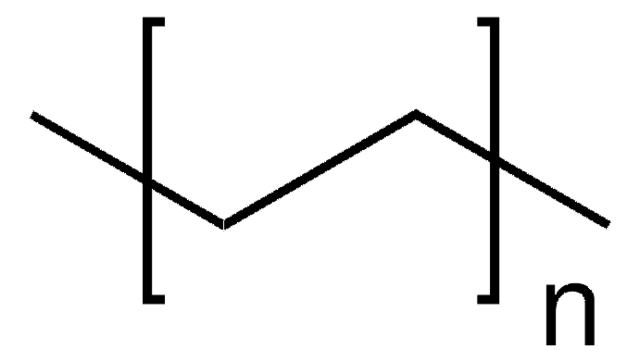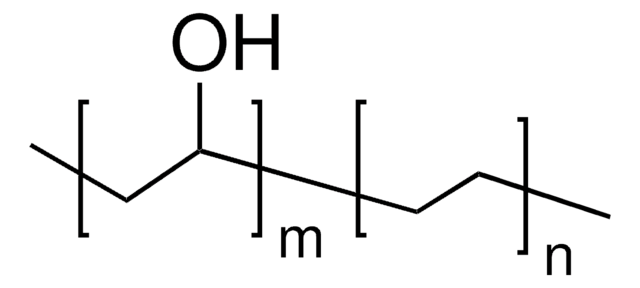428078
Polyethylene
Linear low density, melt index 1.0 g/10 min (190°C/2.16kg)
Faça loginpara ver os preços organizacionais e de contrato
About This Item
Fórmula linear:
H(CH2CH2)nH
Número CAS:
Número MDL:
Código UNSPSC:
12162002
ID de substância PubChem:
NACRES:
NA.23
Produtos recomendados
brilho
50 % (45°C, ASTM D 523)
Nível de qualidade
Formulário
pellets
índice de fusão
1.0 g/10 min (190°C/2.16kg)
pf
100-125 °C
densidade
0.918 g/mL at 25 °C
cadeia de caracteres SMILES
C=C
InChI
1S/C2H4/c1-2/h1-2H2
chave InChI
VGGSQFUCUMXWEO-UHFFFAOYSA-N
Procurando produtos similares? Visita Guia de comparação de produtos
Categorias relacionadas
Aplicação
Film applications having good drawdown and toughness.
Características e benefícios
No-slip or anti-block additive. Films have good puncture resistance and heat seal strength.
Código de classe de armazenamento
11 - Combustible Solids
Classe de risco de água (WGK)
WGK 3
Ponto de fulgor (°F)
Not applicable
Ponto de fulgor (°C)
Not applicable
Equipamento de proteção individual
Eyeshields, Gloves, type N95 (US)
Escolha uma das versões mais recentes:
Já possui este produto?
Encontre a documentação dos produtos que você adquiriu recentemente na biblioteca de documentos.
Os clientes também visualizaram
Morteza Meftah et al.
The Journal of bone and joint surgery. American volume, 95(13), 1193-1197 (2013-07-05)
Ceramic femoral heads produce less wear of the opposing polyethylene than do metal femoral heads in wear simulation studies. This is a matched-pair analysis of the wear of ceramic and metal femoral heads on conventional polyethylene in uncemented total hip
Ingvild Bostadløkken et al.
Ugeskrift for laeger, 175(13), 891-892 (2013-04-16)
We present a case of a 66-year-old woman who had a total knee arthroplasty. Shortly after surgery a 90° rotation of her polyethylene liner took place. The complication was undiagnosed for 1.5 years. To know this problem and be able
Alicia E Leadford et al.
Pediatrics, 132(1), e128-e134 (2013-06-05)
Hypothermia contributes to neonatal mortality and morbidity, especially in preterm and low birth weight infants in developing countries. Plastic bags covering the trunk and extremities of very low birth weight infants reduces hypothermia. This technique has not been studied in
S Strieth
HNO, 61(3), 211-216 (2013-03-08)
Although porous polyethylene (PPE) implants are already used in reconstructive craniofacial surgery, they are still only applied in rhinoplasty when critically indicated. Biocompatibility of PPE implants (pore size ~100-200 µm) can be modified by tissue engineering: coatings with extracellular matrix
Maria C S Inacio et al.
Acta orthopaedica, 84(2), 145-152 (2013-03-15)
There is no substantial clinical evidence for the superiority of alternative bearings in total knee arthroplasty (TKA). We compared the short-term revision risk in alternative surface bearing knees (oxidized zirconium (OZ) femoral implants or highly crosslinked polyethylene (HXLPE) inserts) with
Nossa equipe de cientistas tem experiência em todas as áreas de pesquisa, incluindo Life Sciences, ciência de materiais, síntese química, cromatografia, química analítica e muitas outras.
Entre em contato com a assistência técnica



